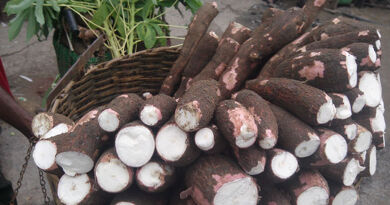African masks
The Gélédé festival is an annual festival taking place in the dry season (March-May) among the Nago-Yorouba people of Nigeria and the Republic of Benin. The purpose of the holiday is to honor and appease mothers (older women), who are said to have very powerful spiritual powers which they can use for good or bad purposes. The wearers of Gélédé masks, who put on female clothing and false breasts, belong to a secret initiatory society led by a woman. Dressed in colorful suits, they wear helm masks on their heads, allowing them to see through a fabric that completely conceals them. Accompanied by percussion, these satirical masks mock certain behaviors and attitudes, thus formulating strong social criticism through dance, gesture, proverbs, anecdotes and derision. The Gélédé heritage was proclaimed (2001), a masterpiece of the oral and intangible heritage of humanity by UNESCO.
Certain secret male societies of West Africa allowed and still allow their members a ritual disguise on the occasion of periodic and public masquerades where sexual and verbal license in women were authorized. During the Ojionu masquerades of Ibo (Nigeria) the men who wear masks, women’s panties, fans and mirrors adopt an exaggerated feminine behavior imbued with satire and social criticism.
The Zangbéto, known as ghost masks or night guards, are traditional figures of coastal localities in the Republic of Benin. Voodoo spirits, night owls masks or night gendarmes, they were responsible for ensuring the night police against criminals and evil spirits by watching over the sleep of good people. Particularly feared, they are generated by members of initiatory secret societies who punctuate their public outings with “magic tricks” intended to demonstrate their power and inspire respect. Accompanied by a set of percussions, these cones or boxes of straw, dance, speak and twirl.
Egun, Egungun, Kouvito or returning
The Revenant or Egungun masks of Yorouba culture (Nigeria, Rep. Of Benin) which incarnate the dead of a family or a community, perform public and ritual outings as part of ceremonies dedicated to the deceased (these absent-present who watch over us). Apart from these seasonal events, they also occur during weddings, births, baptisms or deaths of one of the members of the initiatory society that generates them. Richly decorated with colorful fabrics, velvet enhanced with sequins arranged in various symbolic patterns, the dancers who dance and manifest themselves in a nasal voice, like to run after children and adolescents whom they flog in passing. The initiates who supervise them then prevent them from coming into contact with the spectators because, according to the prescriptions of tradition, the loincloth of a ghost must never touch a living being.




